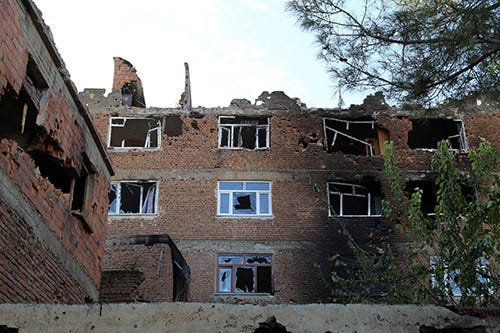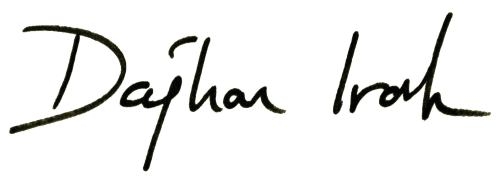Who is talking (and who’s not) about Turkey’s silent and bloody civil war?
Turkey’s Islamist-conservative AKP government has been imposing days-long curfew on predominantly Kurdish regions, which, since June 2015, have opted out voting for the ruling party and given a strong support to the up and coming Peoples’ Democratic Party (HDP), the latest flag bearer of the Kurdish freedom movement in Turkey. The curfews are often introduced as mere security measures by the government, however they function as state of emergency, which Turkish state has had the habit of declaring when Kurdish civilian areas are gung-hoed by the army and the special operation squads.


According to a recent report released by the Human Rights Foundation of Turkey (TİHV), around 1.3 million people have been affected by the curfews, some of which lasted more than a week.
The curfews imposed by the government have also resulted in dozens of civilian deaths. According to the Human Rights Association (İHD) 22 civilians were killed, only during the curfew in Cizre in October.
A series of curfews causing civilian deaths and utter destructions of entire towns in a country may have been expected to dominate the political agenda, inciting millions to question the government policies which instantly turned into “mass destruction” from “peace process,” after it was understood the ruling party was no longer wanted in Kurdish regions of Turkey.
Since the Gezi resistance which took place in 2013, Twitter has been a major forum of political debate in Turkey. The political polarisation in the country forced the citizens with different views to leave aside their traditional timidity of discussing political issues in public sphere and fiercely defend their positions against the “others.” Therefore, the curfews could have been presumed to be a major discussion point in Turkish Twittosphere. Except, it isn’t…
I have taken three curfews imposed in three significant Kurdish towns, Cizre, Sur and Silopi, last week as sample cases. I collected the Twitter data on these curfews via a must-have Excel add-on called NodeXL, treated and visualised the data using another essential software for data scientists, Gephi. While I use these two software mainly for academic purposes as a researcher and an instructor, this small research that I will present below does not claim academic value. However, in order to preserve integrity of the research, I will try to stay in bounds of the scientific method (except the fact that a data-based research should have been reiterated a number of times to have scientific validity). For my research, I collected tweets in Turkish language posted between 7–13 December, containing the words Silopi, Sur and Cizre. For data treatment I used Eigenvector Centrality algorithm which defines the most influential nodes (actors) in a social network, and Modularity Class which helps define different clusters in a network. For data visualisation, I used the Force Atlas 2 algorithm, and Layer Adjust feature of Gephi, for easily perceived images. The datasets of all three cases could be found here as Gephi project files, which could be inspected both data-wise and graphically.
Findings
The total number of nodes (actors) featuring in three networks is 10,944 (3,648 in average), which strikingly low bearing in mind Turkey is estimated to have 5.6 millions of active Twitter accounts.
For the Cizre curfew, I have detected 1,843 nodes with 1,999 edges (interactions).

This network is mainly driven by HDP MP Meral Danış Beştaş (centre-right of the graph, with colour burgundy), surrounded by a number Kurdish users and critical users. At the centre of the graph, human rights activist Meryem Göktepe and journalist Ümit Pencereci are visible, outspoken celebrity Pelin Batu (desteveneu) having contacts with them. The top-right of the graph is dominated by pro-Gülen accounts, while the distant top-left features pro-AKP and nationalist accounts praising the operations in Cizre.

The Sur network graph is quite interesting as the whole image is divided into two; the left part supporting the state operation, and the right part critical of it, mainly dominated by Kurdish accounts, such ANF agency and Özgür Gün TV networks. The left part is quite remarkable as it connects pro-AKP accounts such as bizimguneydogu and twitdiyarbekir with the self-proclaimed Kemalist canleroy. The connection between pro-AKP users and ultra-nationalists are visible in more minor scales, in other networks. The pro-Gülen users are fewer in this graph but journalist Emre Uslu, a well-known Gülenist appears at the centre-bottom of the graph (colour orange)

In the Silopi curfew graph, HDP MPs Meral Danış and Faysal Sarıyıldız, along with Kurdish journalist Hayri Tunç are very influential. There are two clusters of critical media, featuring İMC TV, Evrensel, BirGün newspapers and Sol website. They are connected to left-wing teachers’ union Eğitim-Sen as well. Two mainstream news outlets, CNN Türk and Al Jazeera Turk appear in this graph, while other mainstream networks are once more absentees.
Analysis
One of the most visible conclusions of these three cases is; the curfews are debated on social media in Turkey by a huge effort of HDP MPs and Kurdish media. The critical and relatively independent media are also aware of the situation and more or less contributing to the discussion. The pro-Gülen networks are quite interesting as they evidently see this as an opportunity to legitimize their newly-acquired opposition status. During long-lasting their cooperation with AKP, which ended not with a bang but with a major and ongoing feud, Gülenists were more eager to defend nationalistic views. The popular TV series Şefkat Tepe with strong anti-Kurdish and ultra-nationalistic tones, aired by pro-Gülen Samanyolu TV was a well-known example of their former stance on the issue.
Another important point is the complete absence of main opposition Republican People’s Party (CHP) in this graph. While the party had previously stated their concerns on the curfews and conducted a field survey in the area, led by MP Sezgin Tanrıkulu; none of the CHP MPs or pro-CHP accounts feature in our three sample cases. Twitter is a medium where mainstream opposition is quite dominant, therefore CHP’s absence may explain why the debate on curfews is a low-frequency one. The reasons of this absence must be thoroughly discussed. The other opposition party, ultra-nationalist MHP is also absent, as they seem to maintain their silent support to the AKP government as long as Kurds get killed.
Also, the mainstream media is absent from the curfew debate. It’s common knowledge that AKP increased its pressure on mainstream media, notably on the Doğan Group, and ensured their total silence on many issues. Nevertheless, Doğan’s CNN Türk appears one of the very few mainstream outlets in our graphs, although the content of their messages should be separately analysed. Other major media networks with a few and negligible exceptions are completely off the graph, which is an indicator of the heavy censorship going on in Turkey, at least since 2010.
AKP’s networks, who were very vocal on celebrating police and army operations in Kurdish regions in the previous weeks, seem to dial down their joy as they are rather insignificant in the debate. Especially, pro-AKP media practice a complete blackout on the issue and AKP’s very vocal MPs in a number of issues on Twitter also prefer to skip the curfew debate. Therefore, it can be said that AKP networks are surely supportive of the curfews and the operations; however they don’t find it very beneficial (notably about their waning support among Kurdish voters) to address this topic publicly.

Be First to Comment